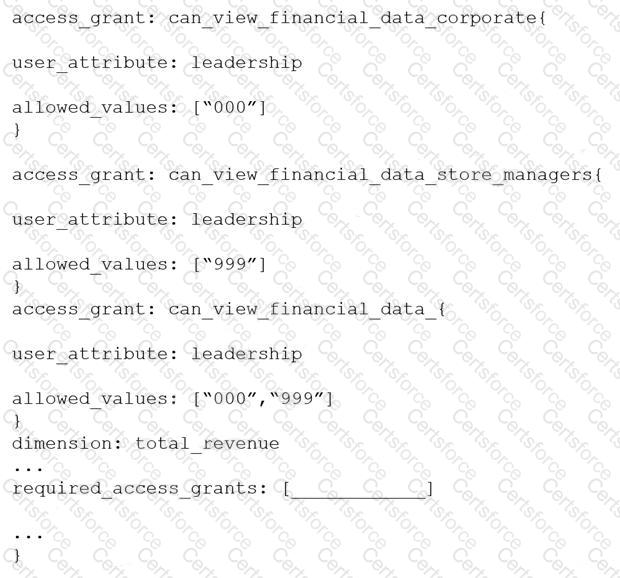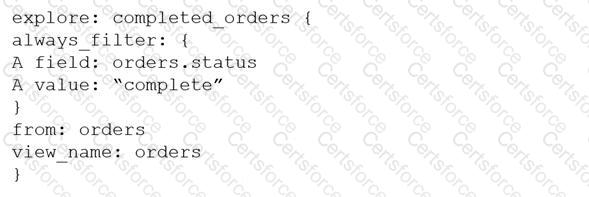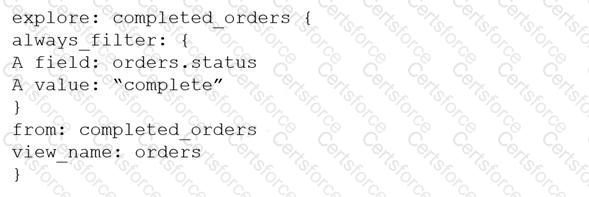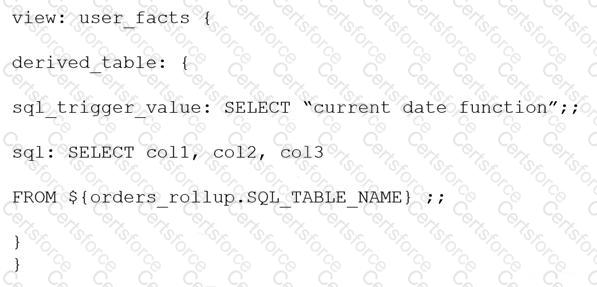A retail company wants to limit who can see the financial information in their reports to executives and store managers. The LookML Developer creates a user attribute called leadership with the value “000” for executives and “999” for storemanagers. The developer creates three access grant objects and one dimension:

How should the developer ensure that only authorized users see the data in the Total Revenue dimension?
A developer has a persistent derived table view called user_facts that contains aggregated data for each user. The developer needs to query the data from this table in another derived table view called user_region_facts.
Which strategy should the developer use to write the query for user_region_facts that will leverage the existing derived table?
A user reports that, when a date dimension is filtered to “before now” results are returned that consistently include tomorrow. Dimension fill has been ruled out as a cause of the issue.
Which LookML parameter should be used to resolve this issue?
Business users report that they are unable to build useful queries because the list of fields in the Explore is too long to find what they need.
Which three LookML options should a developer use to curate the business user’s experience? (Choose three.)
Business users reportthat an ephemeral derived table tile on the dashboard is slow.
Information about the dashboard includes:
The dashboard filter is linked to the user attributes.
This tile usually takes approximately 5 minutes to complete running.
Which solution should be used to improve the dashboard load time?
A developer needs to add an Explore built off of the orders view, which surfaces only completed orders. An orders Explore exists that contains all order information. Fields from the orders view arealso referenced in other existing views such as ${orders.fieldname}.
How should developer define a new Explore for completed orders and keep all field references working correctly?
A)

B)

C)

D)

A user is seeing an error in the Explore that indicates the primary key defined for a one-million-row table is not unique.
How can the developer use SQL Runner to troubleshoot quickly?
A LookML developer is creating a new view with 20 dimensions in Development Mode using the Create View fromTable functionality. Now users want the developer to add only four dimensions from this new view to an existing Explore.
What can the developer add to the Explore to limit the number of fields from the view that are accessible to the user in the Explore?
A developer creates a derived table and wants to add persistence to it. Because the table is not used on a frequent basis, the developer wants thetable to be cached for 12 hours, but only when a user has queried it.
Which persistence parameter should be added to the derived table’s definition in order to satisfy this use case?
A LookML developer has written the following persistent derived table. It references orders_rollup, another persistent derived table that also rebuilds with the same SQL trigger value.

Which change is needed to guarantee that user_facts will always rebuild with the latest data from orders_rollup?